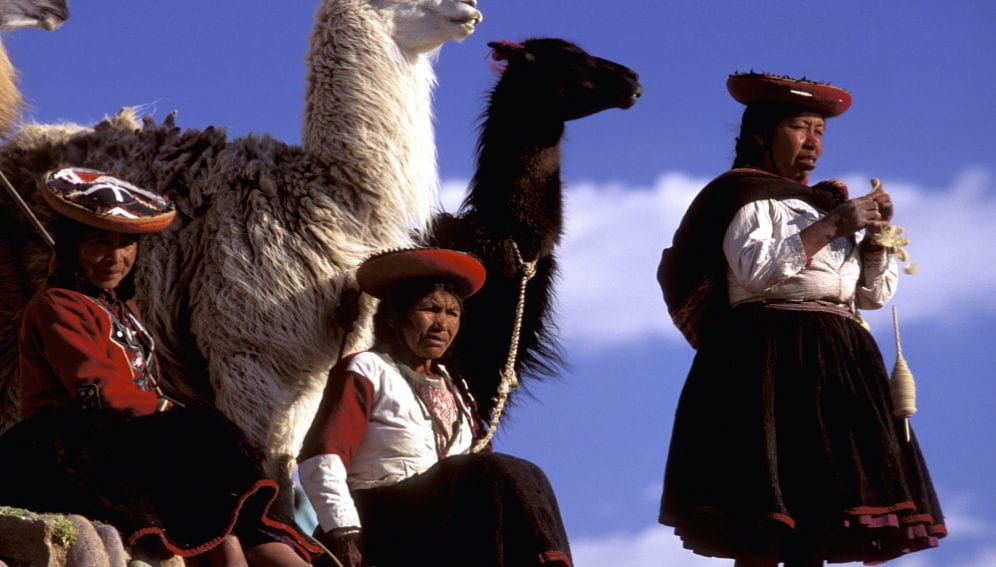By: Zoraida Portillo
Send to a friend
The details you provide on this page will not be used to send unsolicited email, and will not be sold to a 3rd party. See privacy policy.
The recently launched irrigation and hydropower Olmos megaproject in Peru is hailed a ‘masterpiece of engineering’ aimed at stimulating rural development — but some fear the initiative will mostly benefit big companies.
The project will bring water from the Atlantic side of the Andes to the Pacific side through a tunnel in the mountains, to irrigate the arid Olmos Valley in the country’s northwestern region of Lambayeque and open up 38,500 hectares of land for farming.
Peru’s President Ollanta Humala inaugurated the project, which cost US$580 million, on 18 November — nearly a century after it was first proposed. It is estimated that the project will create 40,000 direct jobs and around 200,000 indirect ones.
The initiative to divert the Huancabamba River that runs into the Atlantic in the mountains of the Piura region was first conceived in 1924 to improve the living conditions of people in Lambayeque, through integrated water, land and crop management. The addition of the hydroelectric component was suggested in the 1940s.
“The main question is how many farmers this project is really going to benefit.”
Jaime Escobedo, Peruvian Centre for Social Studies
The plan is that the water from the Huancabamba River will first be diverted by the Limon Dam into a 20-kilometre long and 4.8-metre wide Trans-Andean tunnel, to the other side of the continental divide.
There, the water joins the Olmos River and is expected to irrigate 5,500 hectares of land. Further down the river, hydroelectric power stations are being built that will generate 4,000 gigawatt-hours of electricity per year.
Then, finally, the water will reach the Palo Verde Dam — which will have a capacity of 790 million cubic metres of water — and will be used to irrigate additional 38,000 hectares of dry land. The idea is to use the land to cultivate crops such as banana, sugar cane, avocado, quinoa and passion fruit.
But although the main aim is to boost food exports, small scale farmers may not be benefit, says Manuel Paulet-Iturri, a specialist in soil and water management, who previously worked at the Inter-American Institute for Cooperation on Agriculture.
“Priority [has been] given to big businesses at the expense of local populations,” he says. “The original plan was different. It had a better control on distribution of water according to demand. But later the government focused on selling the land to finance the work.”
Land sale is one of the project’s most controversial aspects: most of the land has already been auctioned to large corporations and only a tiny area of 5,500 hectares still belongs to small farmers who have historically owned it.
“Modernisation has replaced the concept of development,” says Jaime Escobedo, a researcher at the Peruvian Centre for Social Studies. “Big capital has pushed aside development proposals that combined science and technology to improve the living conditions of local people. In Olmos, S&T is not at the service of development.”
For instance, Corporation Gloria, a firm of the Gloria Group consortium and one of the companies benefiting from the land auction, has allocated 11,000 hectares to plant sugar cane and has already invested US$49 million to build a large sugar mill.
“The main question is how many farmers this project is really going to benefit,” says Escobedo. “Farmers from El Cascajal, inside the Olmos area, have been asking for irrigation to be able to work on their plots for 90 years, but they have been left out of the project, they were never invited to participate and of course they don’t have money to buy more land.
“We are talking about 8,000 families – more than 40,000 people that have always lived here. So, in the end the 5,500 hectares given to the farmers won’t be of benefit of the entire Olmos farmer population, just to those who have already been using the land but lacked water.”
But one thing is certain: the project will create jobs, says Fernando Cillóniz, an agricultural businessman who used to be the Chair of the Promotion Committee for the Public Land Auction of the Olmos Irrigation Project.
“Countless Peruvians will migrate to live and work in Olmos irrigation,” he says. “Many professionals will work in agribusiness firms that have begun to operate in Olmos. Thousands of new companies will be formed to supply the great demand that will be generated from this great northern project.”














